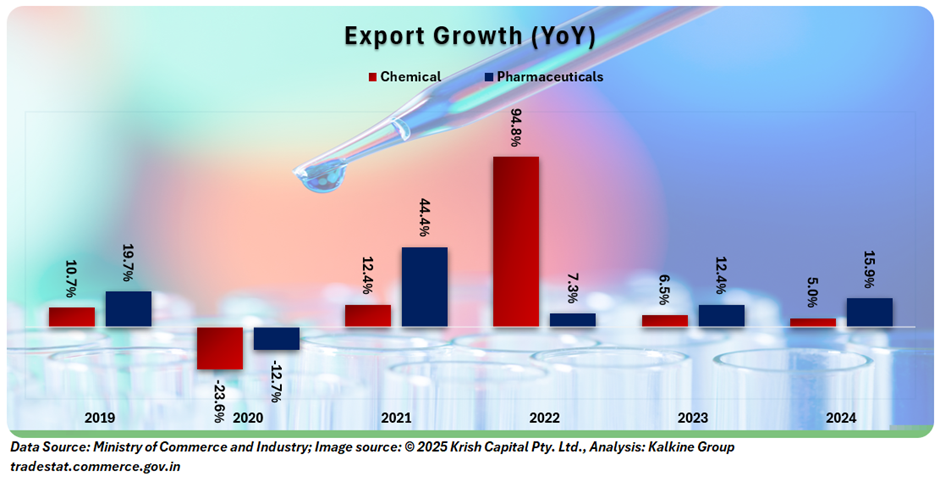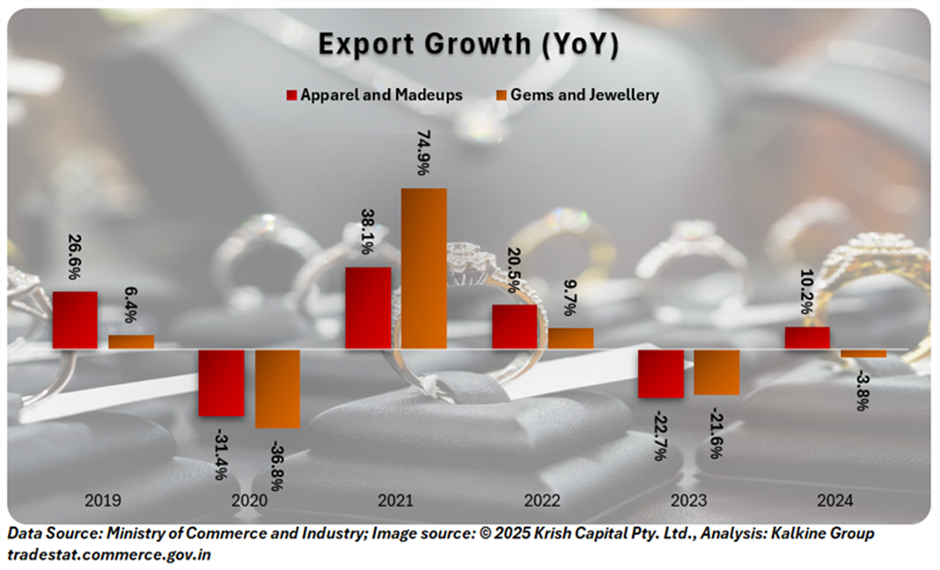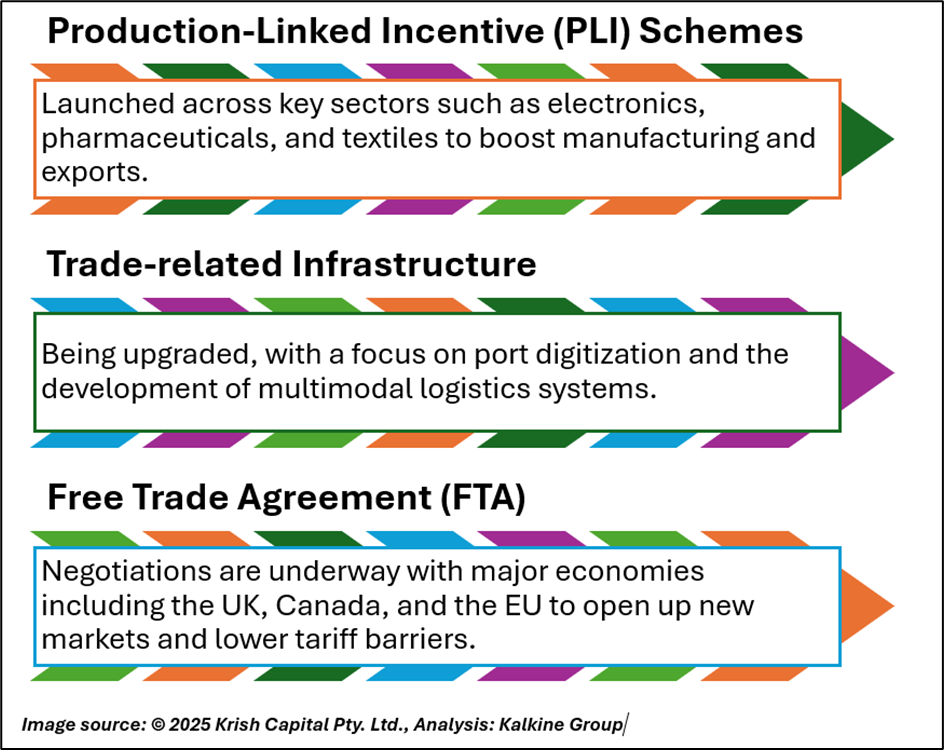India’s Trillion-Dollar Export Drive: Strategic Sectors Lead the Way

Source: Shutterstock
The Federation of Indian Export Organisations (FIEO), India’s leading export promotion agency, forecasts that the nation’s total exports of goods and services will hit USD 1 trillion in the fiscal year 2025–26, marking a significant leap from the USD 825 billion registered in 2024–25. The ambitious target reflects a concerted strategy to enhance sector-specific competitiveness and improve integration with global value chains amid shifting global trade dynamics.
The USD 1 trillion export goal would represent a 21% YoY increase in total exports, offering a potential boost to GDP growth, employment generation, and foreign exchange reserves. Exports are a vital component of aggregate demand and play a key role in narrowing the current account deficit. They also act as a channel for technology transfer and innovation spillover, particularly in sectors like electronics, chemicals, and pharmaceuticals.
According to economists, achieving this milestone would require a mix of policy support, infrastructure expansion, trade diplomacy, and digital transformation across the value chain. The government has already rolled out initiatives like the Production Linked Incentive (PLI) schemes, export credit enhancements, and trade agreement renegotiations, which are expected to provide tailwinds for the export momentum.
Strategic Sectors Powering the Export Agenda
The path to USD 1 trillion is expected to be paved by a diversified portfolio of high-performing sectors. Each offers a distinct mix of competitiveness, value addition, employment potential, and global relevance
- Electrical and Electronics- A high-value, innovation-intensive sector, Electrical and Electronics is poised to be a game-changer. Benefiting from Production Linked Incentive (PLI) schemes, increased foreign direct investment, and greater integration with global value chains, the sector is witnessing rising exports of semiconductors, consumer electronics, and industrial automation solutions. Its growth will also contribute significantly to technology diffusion across the broader manufacturing landscape.

- Agri and Allied Products- India’s Agri-export ecosystem is undergoing a transformation with increasing emphasis on value-added and processed food products. Export growth in categories such as spices, organic produce, and ready-to-eat items holds promise for inclusive rural development. However, the sector’s export trajectory remains sensitive to global commodity cycles and climate variability.

- Petroleum Products- Despite being import-dependent on crude, refined petroleum products remain a strong contributor to India’s export basket. With world-class refining capacity, Indian exporters are targeting markets in Africa, Southeast Asia, and Europe. While the sector’s employment elasticity is limited, it plays a crucial role in stabilizing the trade balance.

- Chemicals and Pharmaceuticals- The chemicals and pharmaceuticals sector continue to be a cornerstone of India’s export strength. Key sub-segments such as generic drugs, active pharmaceutical ingredients (APIs), and specialty chemicals are scaling globally, driven by cost efficiency, compliance maturity, and strong R&D capabilities. The sector also supports high-quality job creation and is a leading earner of foreign exchange.

- Apparel, Made-ups, and Gems & Jewellery- These labour-intensive industries remain vital for employment generation, especially among women and semi-skilled workers. While global competition, rising costs, and evolving fashion cycles present challenges, targeted interventions such as FTA negotiations, modern infrastructure (e.g., textile parks), and design-led innovation can restore their export dynamism.

Policy Backbone: Enabling Ecosystem for Export Growth
Reaching this export target requires a holistic policy framework. To support this, the Indian government has introduced several measures aimed at boosting export competitiveness.

Global Context: Challenges and Opportunities
Despite a positive outlook, external risks like rising protectionism, geopolitical shifts, and inflation may slow export growth. However, India’s diverse industries, flexible trade strategies, and emphasis on innovation provide strong resilience.
Conclusion
India’s goal of achieving USD 1 trillion in exports goes beyond numbers it represents the nation’s evolution into a globally connected, value-focused economy. Realizing this vision requires coordinated efforts across policy, infrastructure, and industry. With stable global conditions and continued reforms, 2025–26 could become a landmark year in India’s export-driven growth journey.
Disclaimer:
The information available on this article is provided for education and informational purposes only. It does not constitute or provide financial, investment or trading advice and should not be construed as an endorsement of any specific stock or financial strategy in any form or manner. We do not make any representations or warranties regarding the quality, reliability, or accuracy of the information provided. This website may contain links to third-party content. We are not responsible for the content or accuracy of these external sources and do not endorse or verify the information provided by third parties. We are not liable for any decisions made or actions taken based on the information provided on this website.
Copyright 2025 Krish Capital Pty. Ltd. All rights reserved. No part of this website, or its content, may be reproduced in any form without our prior consent.